The Bay of Plenty region is teeming with exciting activities, and the good news is that there are plenty of cost-effective options in both Tauranga and Mt Maunganui. Whether you're interested in hiking, art galleries, culinary adventures, or social gatherings, you'll find a wealth of opportunities for all ages, all abilities and all pockets!!
Today we are focusing on Mount Maunganui and we’ll start with the most obvious activity …
Waste no time soaking in the breathtaking views from the summit of Mt Maunganui, also known as Mauao or "The Mount." Several walking trails lead up and around The Mount, but the 30-minute climb to the summit offers sweeping panoramic vistas of beaches, Tauranga city, and the Pacific Ocean. Fitness enthusiasts can tackle a run up and down "the Mount" or families with pushchairs or those not wanting quite such a strenuous activity “The Base Track” walk around the base of the Mount is also a great walk worth taking. Why not enjoy both!
Whilst in the same area why not try your hand (or rather feet and legs) at …
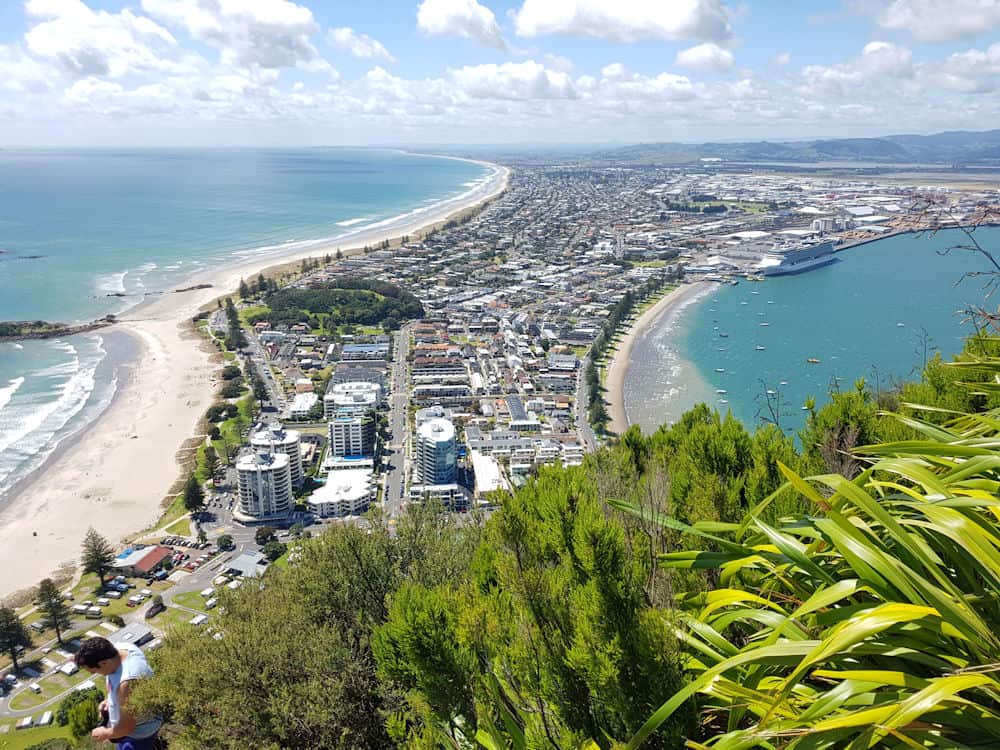
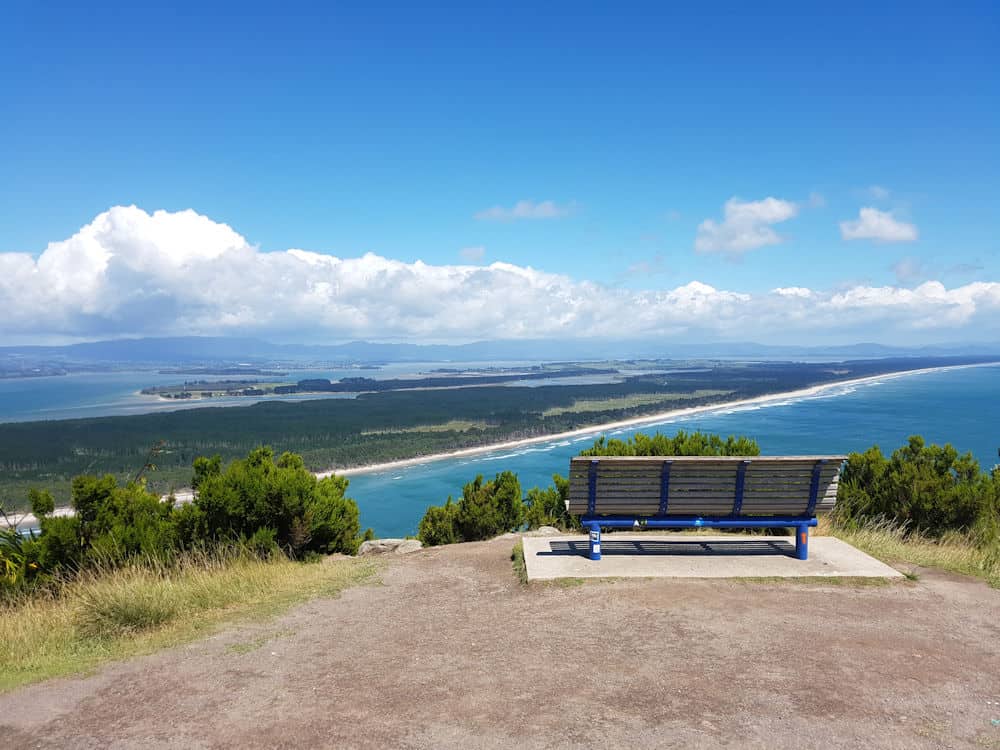
When the waves are up Mt Maunganui Beach offers great thrilling wave-riding fun. There are plenty of surf shops and kiosks along the beach front that often offer deals on surfboard rentals and opportunities for lessons. Surfing is, naturally, high in popularity as an activity in Tauranga.
And before moving on from the immediate vicinity, after your strenuous climb and attempts at riding the waves why not head to …
Enjoy a relaxing soak in the Mount Hot Pools located beneath the majesty of Mauao and the only hot ocean water complex in the world! Prices are quite reasonable, including family pass options. Plus if you have a Tauranga Residents Card you get further discounts!
The pools also offer private pools, massage options and aquafit classes!
Salt water bathing health benefits were recognised as far back as 500BC by Hippocrates believing the warm waters help to rebalance and detoxify our bodies and improve mobility by easing muscle and joint inflammation.
If you’re in the Mount and you’re not into the surf of Mount Maunganui beach then don’t worry! Just on the other side of the Peninsula and edging Tauranga Harbour you will find stunningly beautiful white sands and calm waters of Pilot Bay! This is the side to enjoy kayaks, fishing and paddle boarding. Great for families who want to avoid the surf and Pilot Bay is also the home of Kewpie Cruises.
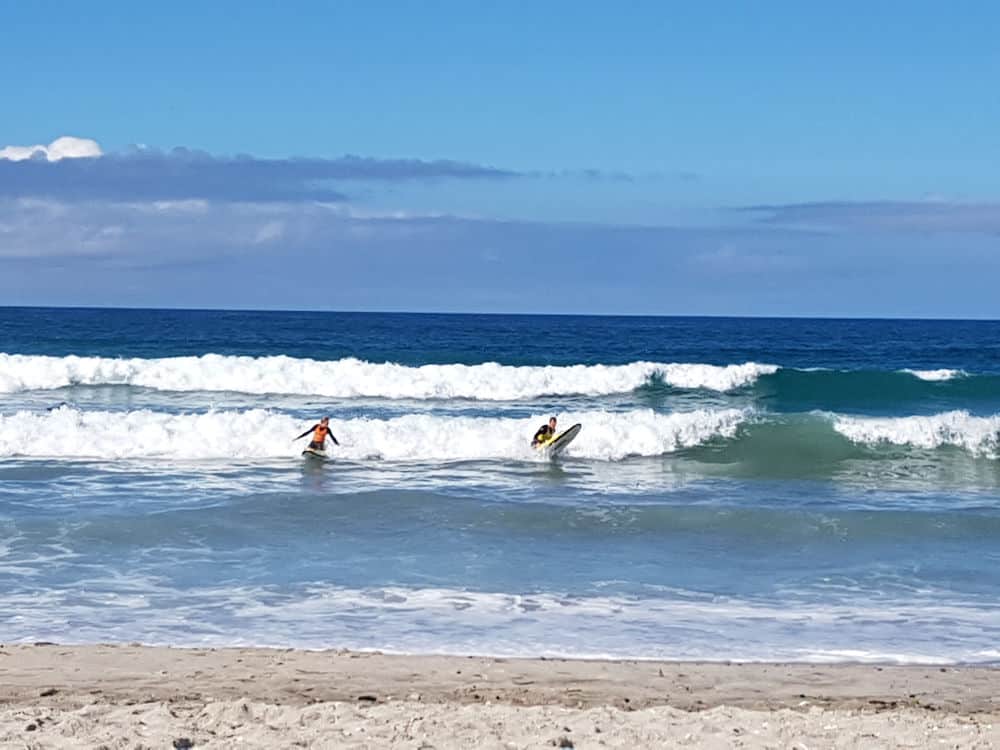
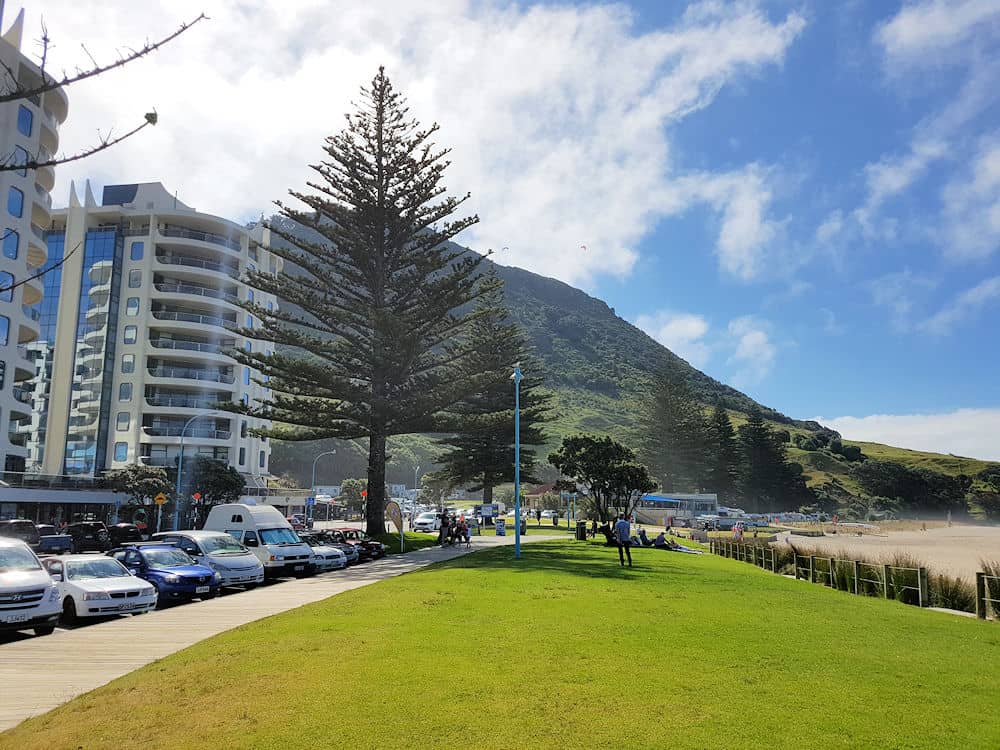
In 1953, a Kauri hull vessel called KEWPIE was crafted in Opua Bay of Islands, coinciding with the same year as Queen Elizabeth's Coronation. Over the span of its 60 years of service, KEWPIE has woven a vibrant tapestry into New Zealand's history.
Originally commissioned by (Fullers) to support the burgeoning commerce along the renowned Bay of Islands "Cream Run," KEWPIE embarked daily from (Russel) to the outlying islands. Its duties encompassed collecting milk cans, transporting passengers, and delivering mail. This commercial venture eventually evolved into one of New Zealand's most sought-after tourist experiences, with tourism surpassing freight as the primary source of revenue.
The vessel's moniker, KEWPIE, was a nod to its former guide, Ted KEWBIT, who achieved fame during his lifetime as one of New Zealand's most renowned guides. The story goes that Ted earned the nickname KEWPIE from his fellow patrons at the local pub. Ted was a charismatic and unforgettable character, characterized by his short stature, ruddy complexion, and cheeky demeanor, which endeared him to both adult passengers and children alike.
It wasn't until the vessel's christening, marked by the smashing of champagne on its bow, that the name KEWPIE was unveiled, leaving Ted in astonishment and deeply moved. In 1957, Ted passed away, leaving behind a legacy embodied by the enduring KEWPIE.
Now running from the jetty at Pilot Bay you can enjoy an iconic scenic harbour cruise on board or get dropped off and enjoy Matakana Island and kids under 12 also travel free!
Note cruises do not run in the winter.
Situated within Tauranga Airport, the Classic Flyers Aviation Museum holds great appeal for aviation enthusiasts and doesn’t leave the kids out either! Its impressive assortment encompasses vintage aircraft, aviation relics, and informative exhibitions that chronicle the aviation heritage of New Zealand.
At this museum, visitors can discover a wide array of aircraft examples and history, encompassing classic warplanes, commercial airliners, and aged helicopters. Additionally, they offer interactive displays and exhibitions divulging the progression of aviation technology and its significance in New Zealand's past.
With the option to climb through aircraft hulls and enjoy toy airplane fun for the kids, as well as a children’s birthday party venue, there really is something for all ages and is an excellent destination to explore.
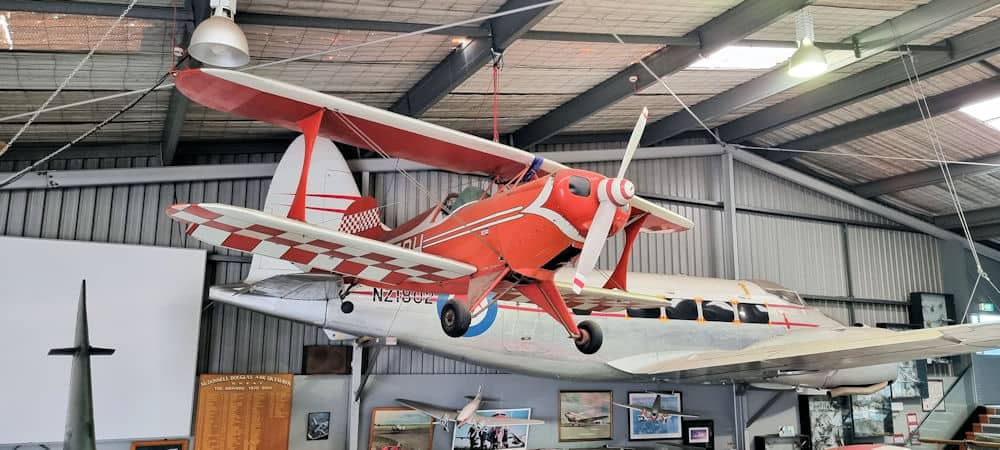
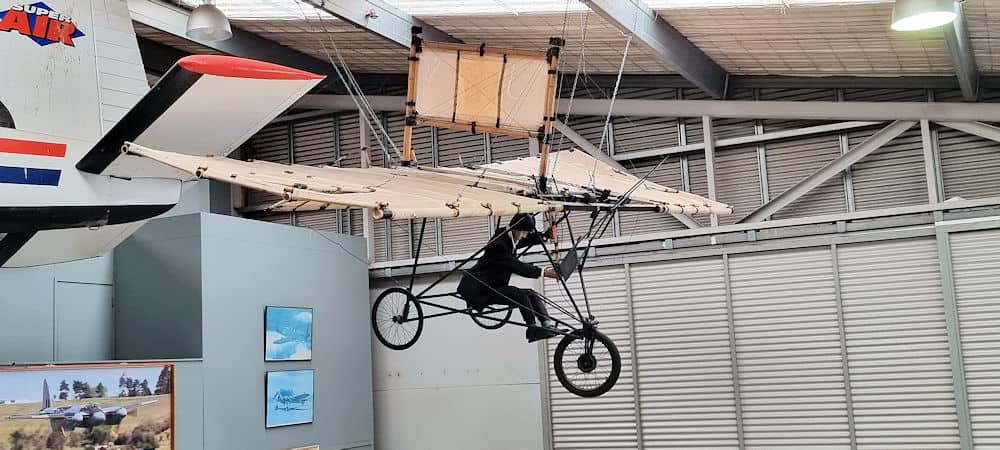
A locally owned and operated 2nd generation brewery with a passion for making tasty high quality brews found, unexpectedly in the heart of the industrial area of the Mount.
Great for family outings with a varied menu and options for great tasting paddles for the adults of their varieties of brews and ciders and right on the park edge where the kids can play safely.
There’s a great atmosphere and a real buzz to an outing to this place!
Perhaps considered an unusual place to find a museum dedicated to the Rhodesian Services Association. The Lion and Tusk Museum was established in 2018. It contains a collection of historical, cultural, artistic and scientific information displays, video, photos and writings which depict Rhodesia, and Rhodesians of all races, from the late 19th century until the country's transition to Zimbabwe in 1980.
Displays include and Alouette III helicopter, medals, badges, weapons, uniforms, equipment, shop, souvenirs, library and Memorial Garden.
If you’re a fan of either shopping or dining then you’ll love Mount Maunganui! The town centre is a hub packed with eateries and boutique shops with beautiful gifts, clothing and more. There really is too many to start singling out shops or eateries covering all cuisines, you really have to just go to the Mount and discover for yourself!
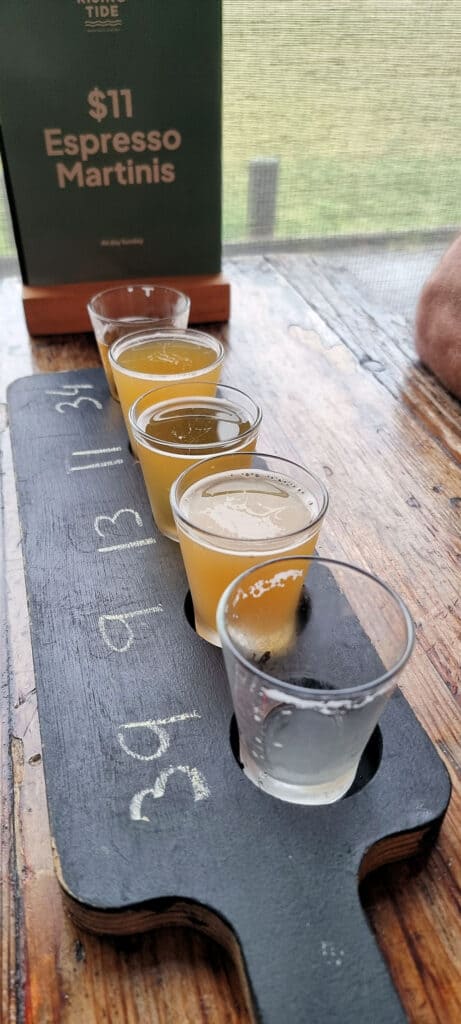
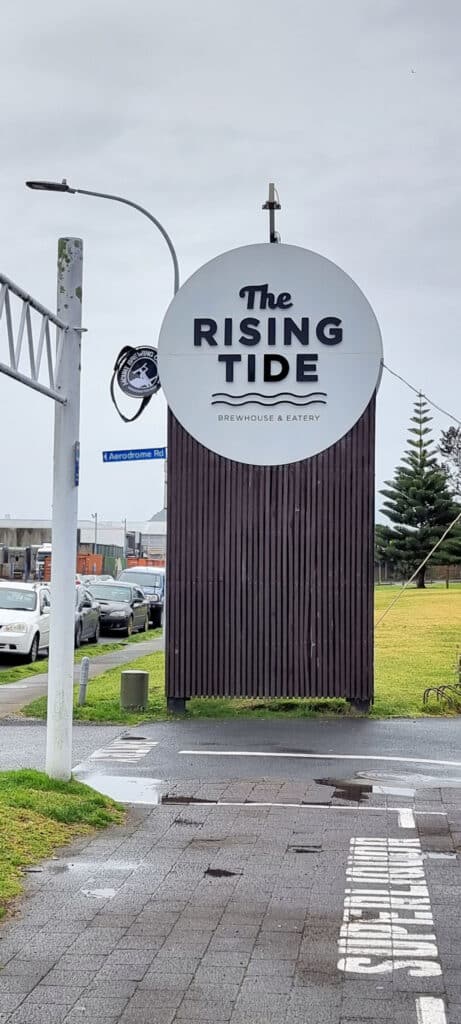
Calling all cricket lovers! Bay Oval, the home of Bay of Plenty cricket, is found right here in Mount Maunganui. It has been a witness to numerous unforgettable moments in cricket, spanning from domestic contests to international clashes. Thanks to its tranquil beachside ambiance and the region's consistently sunny and pleasant weather, Bay Oval stands out as a delightful venue for both participating in and spectating cricket in New Zealand. With a seating capacity of 12,000, it provides an intimate sporting experience that brings cricket enthusiasts closer to the on-field action. If you’re wondering what’s on at the Oval check out their website events at https://www.bayoval.co.nz/whats-on
Whilst Mt Maunganui beach and Papamoa beach are separate beaches they are adjacent and you can’t visit the area without also spending some time on Papamoa beach. Mt Maunganui beach is approximately 1.6 km long and Papamoa beach is approximately 16 km long. Uncrowded and pristine white sands the beach is definitely worth a visit and play for the kids!
Do you or your kids have a great imagination?
One place in New Zealand where it takes little to stimulate it is the “Goblin Forest”.

Located within the lush rainforest surrounding Mount Taranaki you will discover a track abundant in vegetation and holding secret twisted kamahi trunks covered with mosses and ferns.
This is the Kamahi Loop Track, a short 600m walk and suitable for all ages. 15-30 minutes return, dogs are not allowed. To reach the walk, from Stratford, follow the signs for Egmont National Park and the track begins just above the Stratford Mountain House, 15km along Pembroke Road.
The Mountain House is a step back in time, a mix of old world colonialism and stately charm. Originally planned for the Plateau the first house was constructed in 1899 by Curtis and Penn. A ramshackle building it was improved in 1900 and later turned into a two room cottage. When the exposure of the Plateau proved the location was inappropriate the building was moved to its current spot.
The twisty trees, covered with moss on this enchanted walk are a wonder of nature’s making.
When Mount Taranaki erupted approx. 400 years ago it wiped out the rimu forest around it’s base. The kāmahi tree is a common New Zealand native found from just south of Auckland all the way to Stewart Island.
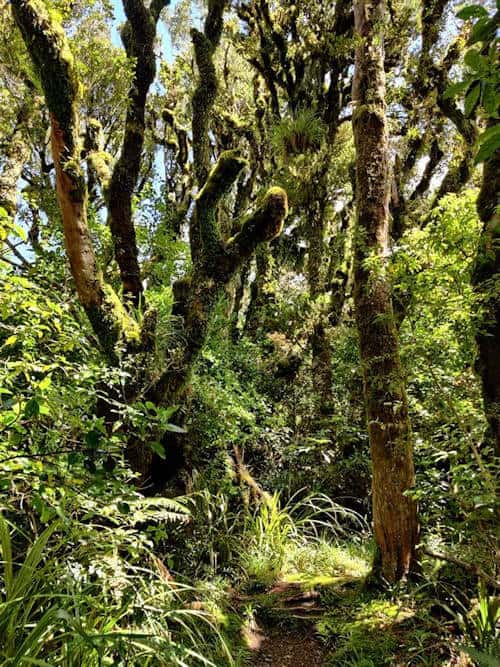
The often irregular trunks and the fact the kamahi often starts as an epiphyte (an organism that grows on the surface of a plant) which has attached itself to the remains of the former rimu trunks and logs, plus its thick leathery leaves and smothering of mosses and ferns, lend to its fairytale appearance and giving that sense this could be the home of goblins, hobbits and other fairytale characters.
As well as the 600m Kamahi Loop Track, you can also take a 30 minute walk from Dawson Falls Lodge nearby which also has the Wilkies Pools at the end with their very own rock water slide!
For anyone visiting the Taranaki region a visit to this track is a must and you never know, you may just find a lost elf, or gathering of fairies!
Blenheim, known as the gateway to the wineries of the Wairau Valley, with more than 30 wineries within driving distance of the town, so a great place to visit for Mum and Dad but it’s also a great visit for the kids for a school holiday destination!
Being one of the sunniest towns in New Zealand, with an estimated average of 2,438 hours of sunshine a year so perfect for enjoying cafes, shops plus popular walkways and the world-class Omaka Aviation Heritage Centre. Here you can discover the world-renowned WWI and WWII exhibits where aircraft are theatrically bought to life and featuring Peter Jackson’s own rare collection of historical aircraft and memorabilia.
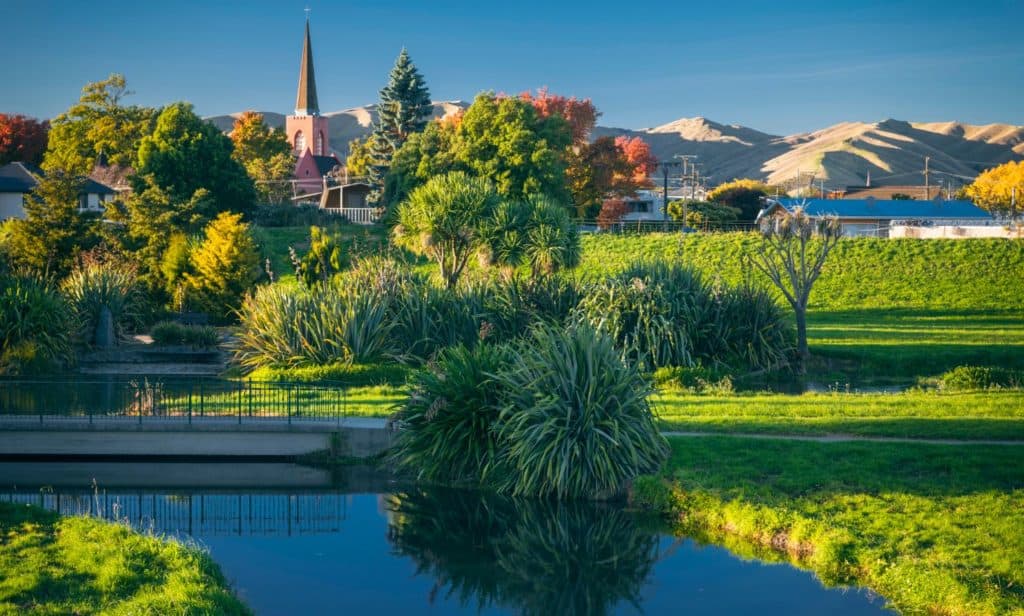
Other family friendly places include Pollard Park with play equipment, gardens, stream and even a fitness trail.
Even the kids will enjoy a visit to the Marlborough Farmer’s Market, on every Sunday 9 am to 12 noon. Known as New Zealand’s original Farmers’ Market and packed with great fresh produce and goodies.
A great location to be based for biking, cruising the Marlborough Sounds, swimming or just spotting the dolphins (there are five different species of dolphins found in this area) or tackling the Queen Charlotte Sound amazing walk.
Within town and surrounds check out the War Memorial Clock Tower and lovely gardens in Seymour Square, beautiful spots like White Bay plus great walks around Taylor Dam, the largest earth flood protection structure in New Zealand and a popular Blenheim recreational reserve with birds, swings, picnic spots and more.
So for those who want a great small town, atmosphere have you thought about taking the family to Blenheim.
If you’re heading to Nelson over school holidays, anytime of year is a good time to take time out to visit Founders Heritage Park.
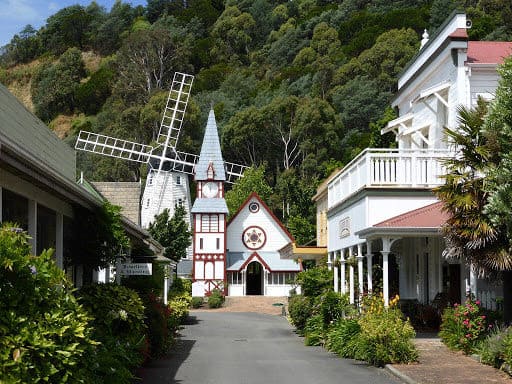
A Nelson City Council venue the park contains a replica historic village, a fine example of Nelson’s history. The character buildings are surrounded by beautiful gardens.
Ride on the train offering a taste of the original Nelson to Glenhope line which was in operation until 1955 and which is operational usually every day in the school holidays.
Visit the exhibitions and displays including the bike display with a good range of bikes, many old and rare including the 1869 bone shaker, the 1875 Penny Farthing, the 1908 pace bike with its unique "granny gear" and the 1902 Pederson Dulux.
Jump into the cockpit of the Bristol Freighter aeroplane and explore the body, a great opportunity for the kid’s imaginations to take them back to a former era.
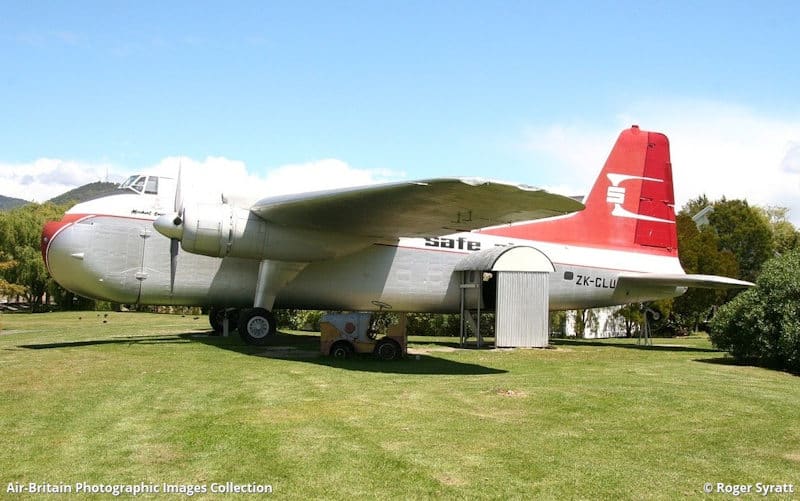
For those lovers of fire engines take the kids to visit the replica of the Nelson Volunteer Fire Brigade Engine House build in 1867 and where you’ll find Dennis, the 1954 fire engine and also Little Flick, the Land Rover Fire Tender.
For the boat lovers you can explore the Port Museum Buildings where you can find out more about Nelson’s rich nautical history.
For the big bus and coach lovers the Newman’s Coach Display will give you the history of Newman’s Coaches who opened up transport routes across the top of the South Island and who were instrumental in the development of New Zealand’s tourism industry. The kids will love the vintage coaches, interactive exhibits and there’s even some early film footage.
For other machine lovers head to the Harvestland Display with machines for all types of activities showcasing Nelson’s agricultural heritage.
Mum and Dad might enjoy popping into the Hop & Beer Museum and all the family will enjoy a break relaxing in the Founders Café which also has a playground next door. Or perhaps bring along a picnic.
All in all there’s something for everyone at Founders Heritage Park.
One of New Zealand’s oldest cities, founded in 1840, 195 km north of Wellington and 164 km south-east of New Plymouth, near the mouth of the Whanganui River. The name means big harbour, although another version is 'long wait'; the town is known as the ‘River City’.
Whanganui is the ancestral home of Ngāti Tūpoho, Ngāti Tūmango and Ngā Paerangi, hapū (sub-tribes) of Te Āti Haunui-a-Pāpārangi. Pūtiki is the marae of Ngāti Tūpoho and Ngāti Tūmango, and Te Ao Hou at Aramoho is the Whanganui marae of Ngā Paerangi. Ngāti Tūpoho and Ngāti Rangi also have a connection with Te Ao Hou marae.
Whanganui was the New Zealand Company’s second settlement, and began as an adjunct of the first, Wellington. In the early years most European settlers came via Wellington, many by foot along the coast. The settlement was named Petre in 1842, after Lord Petre, a director of the company, but the name was never popular and was officially changed in 1854.
Uncertainty marked the early years. Lower-river Māori valued ‘their’ town but questioned the Company’s good faith. Upriver Māori were hostile, and conflict broke out in 1847. In May 1848 the government made a further payment to confirm its ownership of almost 35,000 hectares.
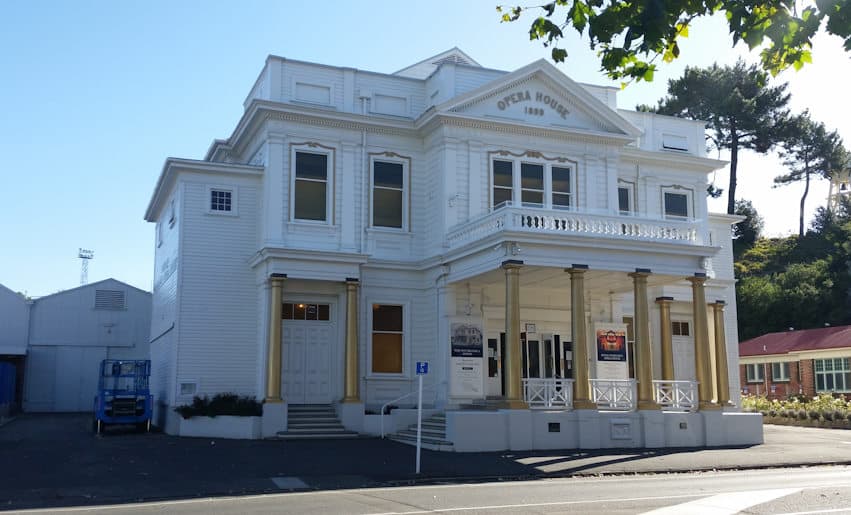
In the mid 1860s the town was under threat of attack by Pai Mārire adherents. Redoubts (fortifications) were built to the north-west and along the river, and troops were deployed. In late 1868 Tītokowaru’s followers from Taranaki raided farms 8 km from Whanganui, but then retreated. The 18th (Royal Irish) Regiment left in January 1870, ending a British military presence of 23 years.
Whanganui expanded in the 1870s with the European settlement of its hinterland along the coast to the north-west, and from the 1880s to 1910s as settlement spread to the inland hill country and the Waimarino plain.
Whanganui became a regional centre. Freezing works, woollen mills, phosphate works and wool stores were established in the town, and trade at the port more than doubled between 1908 and 1929.
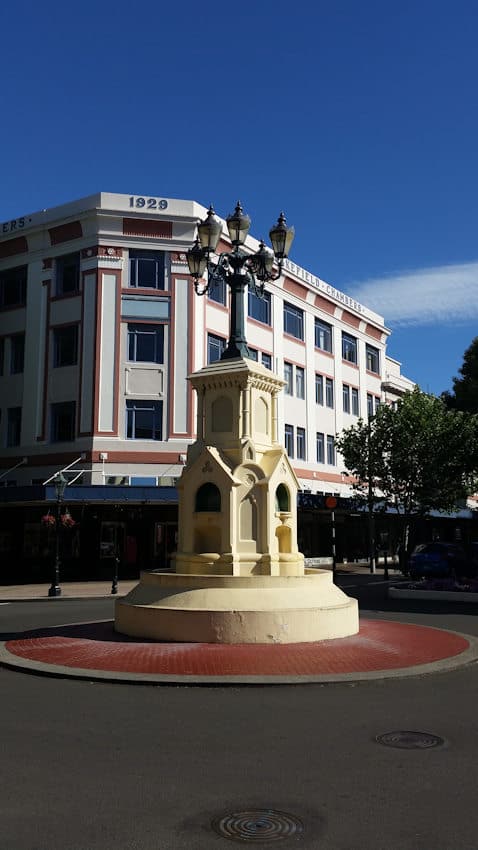
Three landmark buildings are reminders of the vigorous community life of the era:
the old Wanganui Rowing Club building (now the Whanganui Riverboat Centre), built in 1898
the country’s oldest municipal opera house, the Royal Wanganui Opera House, built in 1899
the observatory at Cooks Gardens (a sports ground), which was built in 1903 by the astronomical society under the leadership of Joseph Thomas Ward.
Suburbs developed: Aramoho around the railway station, Whanganui East around the railway workshops, Castlecliff at the port and Gonville near the hospital and freezing works.
With the inclusion of Gonville and Castlecliff in 1924, Whanganui became a city. With a population of 24,740, it was New Zealand’s largest urban area after the four main centres. Substantial buildings at Queen’s Park underscored the new status.
Whanganui was severely affected by the 1930s depression, but thrived anew in the economically buoyant years after the Second World War. An agricultural aviation company operated out of the airport from 1950.
The urban population rose from 26,500 to just over 38,000 between 1945 and 1966. Much state (public) housing was built in the suburbs.
In 1984 the Suzuki Motor Corporation established its New Zealand headquarters in Whanganui, taking over the franchise from a firm set up in 1925 by renowned motorcycle racer Percy Coleman. Coleman’s sons Rod and Bob – both also leading motorbike racers – had expanded the business in the 1960s and 1970s.
Slow growth in the hinterland also hindered Whanganui’s growth. Some new businesses were set up, but from the mid-1980s government offices moved to Palmerston North, and many businesses downsized or closed.
The town grew economically after 1999, with diversified manufacturing and thriving tourism, focused on the river, the main street and the Queen’s Park buildings.
In 2013 Whanganui had an urban population of 38,088 – a decrease of 2% since 1966.
Article citation: Diana Beaglehole, 'Whanganui places - Whanganui', Te Ara - the Encyclopedia of New Zealand, http://www.TeAra.govt.nz/en/whanganui-places/page-1 (accessed 18 January 2021)
Story by Diana Beaglehole, published 16 Jun 2008, updated 15 Jun 2015
Cape Kidnappers/Te Kauwae-a-Māui is situated at the eastern tip of the province of Hawke’s Bay. In Māori mythology, Te Kauwae-a-Māui is the tip of the fishing hook that Māui used to pull up the North Island/Te Ika-a-Māui (‘the fish of Māui’) from the sea.
In 1769 it was named “Cape Kidnappers” by Captain James Cook, the famous English explorer, when local Maori attempted to kidnap his ships interpreters’ son, a young Tahitian boy.
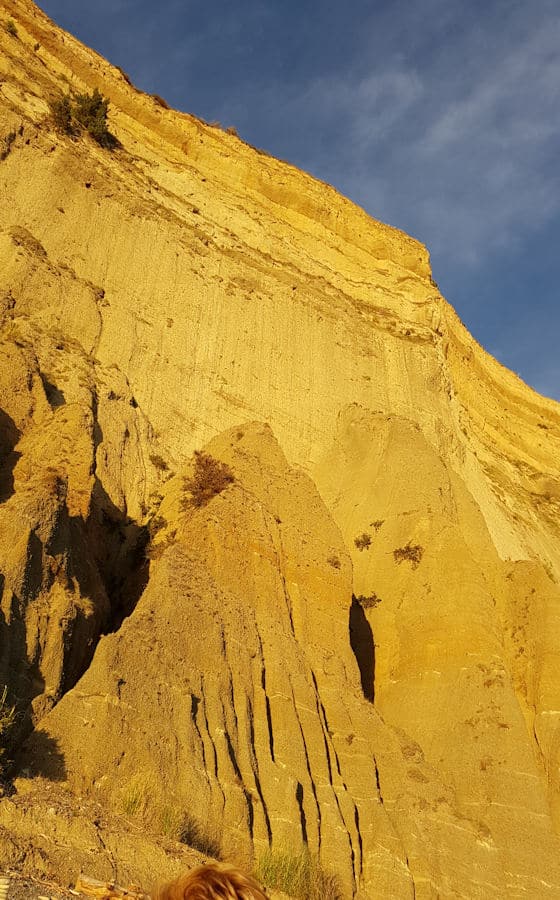
The coastline from Clifton to Cape Kidnappers has a very interesting geological history. Towering cliff faces show clear evidence of different layers of sedimentary material. Earthquake faultlines, gullies and fossils can be clearly seen as well as evidence of the slump of the land due to the tectonic movement. The track is also tidal so make sure you are aware not to be caught by the incoming water!
Cape Kidnappers is the largest mainland nesting site in the world and accommodates almost 25,000 gannets at its peak with approximately 5,000 breeding pairs.
These gannets are the Australasian Takapu gannet. With a 1.8 m wing-span this bird is predominantly white with pointed wings, a long neck and slender body. With black on the trailing edges of it’s wings and within it’s tail feathers, a bluish-grey bill with a black lining and deep blue around the eyes they are distinctive and very elegant looking birds.
There are 4 main nesting sites at Cape Kidnappers being the Plateau, Black Reef, Saddle and Whalebone Reef and you can spot the gannets in high numbers from August to April each year.
The gannets were not mentioned by Captain James Cook on his travels around New Zealand so it is presumed they arrived later. The first note of the gannets on this site was around 1850 by Henry Hill, a New Zealand naturalist.
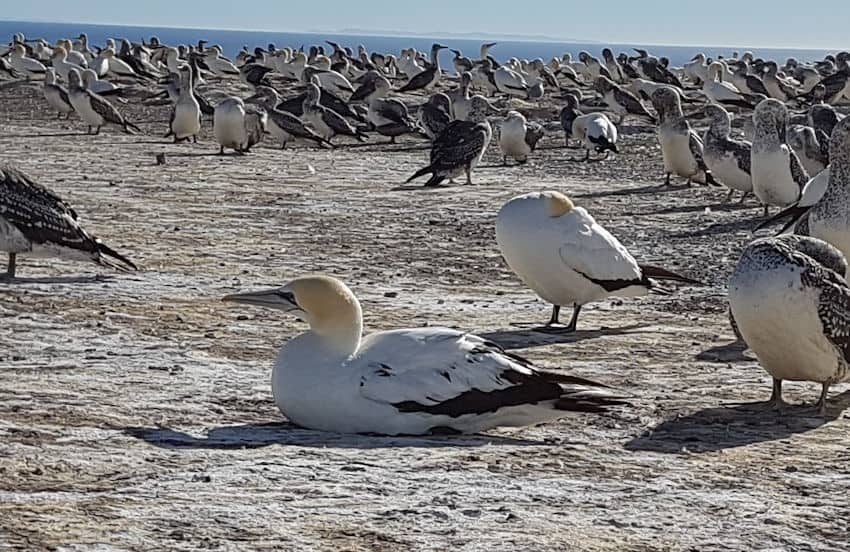
Gannets impressively take their first flight at 15-16 weeks and it is a migration to Australia around 2,800 km. Those that survive, and the numbers are low with approximately 70-80% perishing before returning to NZ. This return is approximately 2-3 years later and after this return they remain at the colony for the rest of their lives, on the land during breeding and winter months out in the New Zealand waters.
The males return before the females and either re-occupy, establish and then defend a nest. Gannets tend to mate for life. Only one egg is laid although if that is lost a replacement egg may be laid.
So when you’re next in the area make a point of heading to see the gannets - a visit to Hawkes Bay just wouldn’t be the same without one!
Lake Tekapo is nestled in the heart of New Zealand's South Island. the second-largest of three roughly parallel lakes running north–south along the northern edge of the Mackenzie Basin in the South Island of New Zealand. It covers an area of 83 square kilometres, and is at an altitude of 710 metres above sea level.
Lake Tekapo is famous for it’s beautiful turquoise blue colour. This is a product of the surrounding glaciers. The glaciers in the headwaters of Lake Tekapo grind rocks into a fine dust on their journey down towards the lake. The resulting particulate, called “rock flour,” is suspended in the water and causes the magnificent turquoise.
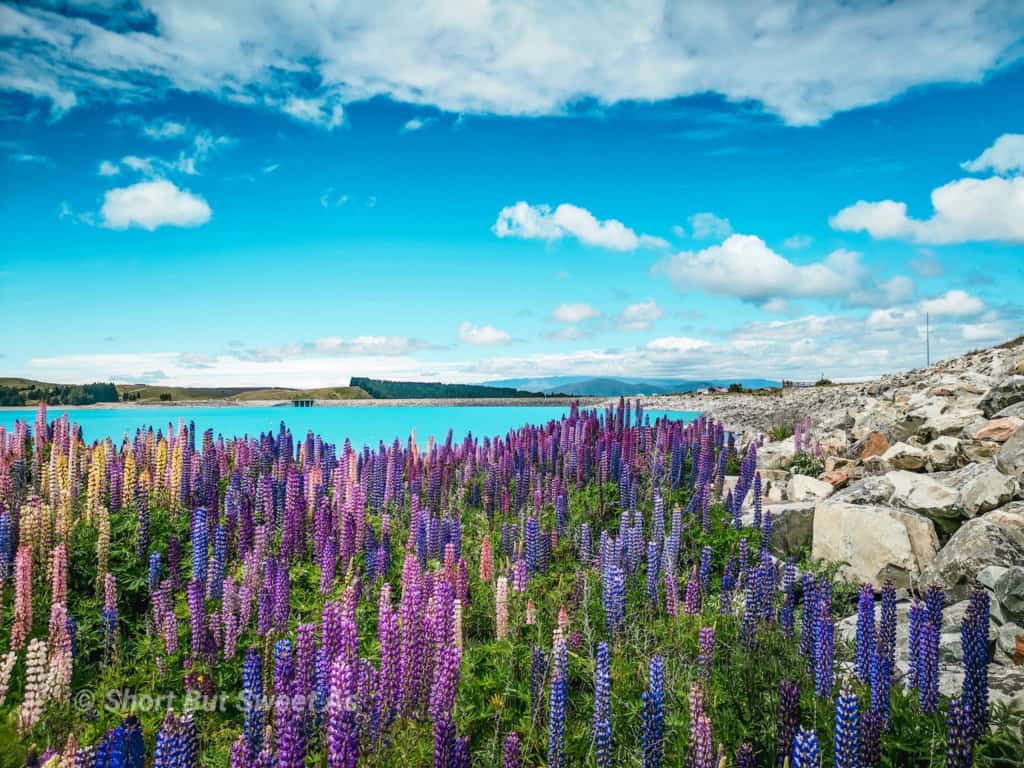
The Lake is also famous for it’s lupins. The lupins found around Lake Tekapo have beautiful tall pink and purple flowers. Lupins are not native to the area but planted by a local woman over 70 years ago and now have become one of the areas beautiful features.
Mid-November to December are the best time to see the lupins and one of the best photographic spots is at a view point called Adrian’s Place on the way to Mount John Observatory on Godley Peaks Road.
And Mount John Observatory is another must do when in the area. New Zealand's premier astronomical research observatory. It is situated at 1,029 m at the northern end of the Mackenzie Basin. There are 6 telescopes including the country’s biggest which can observe 50 million stars each night.
Part of the Aoraki Mackenzie International Dark Sky Reserve, Mount John is one of the best places in the world to observe the planets, stars, galaxies and solar systems. It is also considered one of the most accessible observatories in the world. Tours and viewings are available.
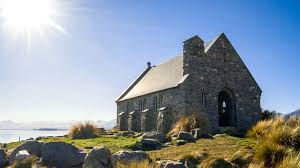
And of course you can’t visit Lake Tekapo without a stop at the Church of the Good Shepherd. Built as a memorial to the pioneers of the Mackenzie region, the foundation stone was laid in 1935 and the builders were instructed the site was to be left undisturbed and that even the matagouri bushes surrounding the building were to remain.
Visitors are welcome to attend a service and this is the home to many weddings – of course!
Just along the way is a statue commissioned by local farmers and erected in gratitude to and celebration of the sheepdog. Life-sized, and standing proudly on a stone plinth, it’s a tribute to the invaluable contribution the collie has made to farming in the Mackenzie Country.
And if that isn’t enough for you then you can always enjoy hot springs, play areas for the kids, a snow tube park and a day spa at Tekapo Springs.
A small New Zealand lake with a lot to offer!
Tairāwhiti means ‘the coast upon which the sun shines across the water' and is the first place to see the sunrise each day.
The land of the first light is renowned for its world-first sunrises. Spanning from the top of the East Cape to the treasures of Turanganui-a-Kiwa Gisborne.
One of the most spectacular places to see the sunrise from is Mt Hikurangi, the highest non-volcanic mountain in the North Island. 80 km north of Gisborne, and 50 km southwest of the East Cape Lighthouse located in the Raukumara Range in the Waiapu Valley, You have to go on a tour with a local Ngāti Porou guide.
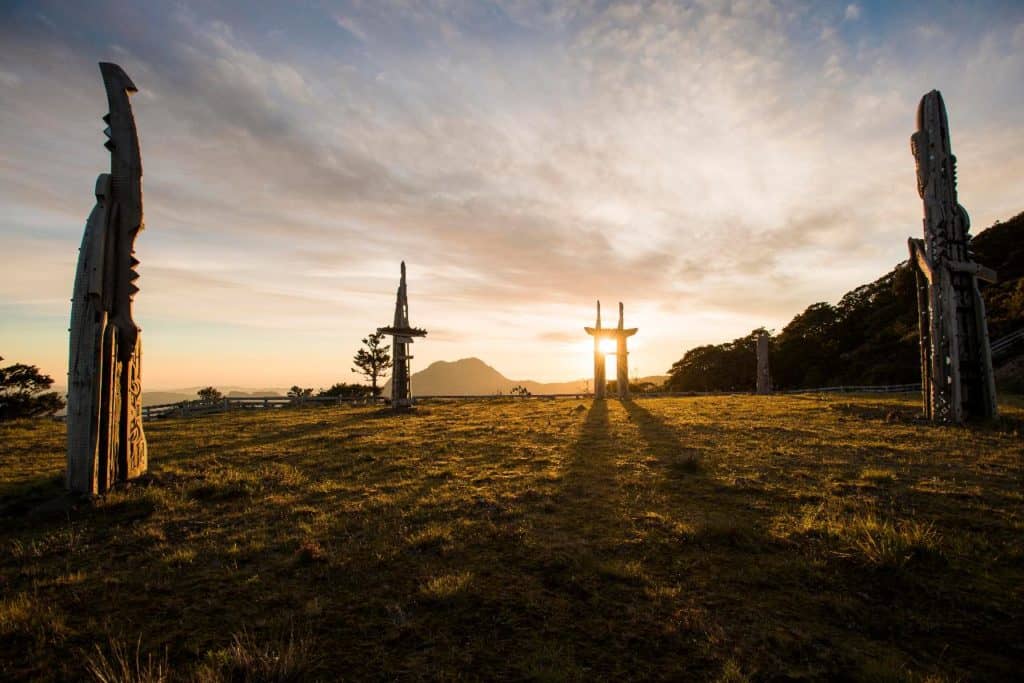
A place of great spiritual and cultural significance to the local people of Ngati Porou, Maunga Hikurangi is a gateway to great Maori history and the legendary feats of Maui and his whanau.
Stand before nine magnificent whakairo (carvings) – each larger than life, each holding a story you can see, hear and touch on top of a sacred maunga – the highest non-volcanic peak in the North Island.
Watch the world awaken surrounded by nine larger than life carved pou (pillars) that stand as sacred cultural treasures of the local Ngati Porou people. Your Ngati Porou guide provides an in-depth and intimate story of each of the carvings, who or what they represent and the significance they hold to the Maori culture.
With roots that can be traced back to the Maori creation story, to when Maui Tikitiki-a-Taranga slowed the sun and gifted fire and fished Aotearoa from the sea. The Ngati Porou people can tell unique and inspiring stories making this a fascinating place to visit in New Zealand.
Located 20 minutes north of Masterton at Mount Bruce, Pukaha is home to some of New Zealand’s most endangered wildlife.
The Mount Bruce reserve is a restored forest and captive breeding site, former home to Manukura, the only white kiwi in captivity, who sadly passed away late December 2020, and other endangered wildlife such as takahē, kōkako, kākā and longfin eels.
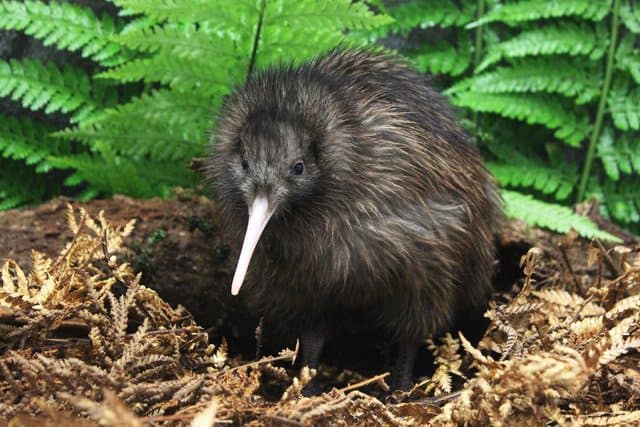
On your visit you will discover a world of wildlife including birds, reptiles, aquatic life and invertebrates all with a fascinating history and all in need of conservation.
You can visit and enjoy at your leisure or there are educational talks throughout the day from the rangers plus a range of guided tours from a 1 hour tour where you will learn the stories behind the birds and plants. Alternatively there is a family tour. You can join the local iwi, Rangitane, wandering through the bush learning about the wildlife, trees and traditional stories of the Tangata Whenua (people of the land). Listen to ancient stories of the Pūkaha forest. Discover Māori whakapapa (genealogy), spirituality and connection to place. Includes shared kai (food) of kawakawa tea and bread.
If you prefer you could choose a night tour where you go on an unforgettable search for kiwi, wētā, and eels, and also check out the glow worm cave. Or you can go on a Wildlife Photography Workshop, suitable for all levels and all photographic equipment (yes, smart phones too).
For the ultimate you can be a “Ranger for a Day” where you can take an active role in what happens in the Park including things that may include weighing kiwi, feeding bush birds and cleaning inside aviaries.
There are also options for those with campervans if you’d like to combine a stay with a dawn or night tour.
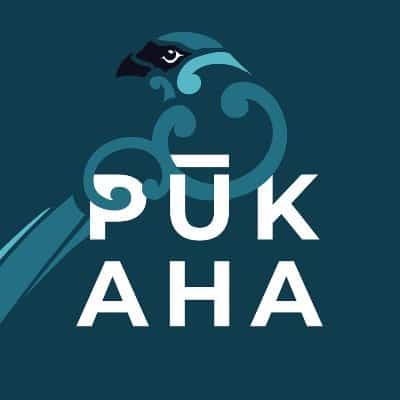
Since its conception as the Mount Bruce reserve, the area has long been involved in captive breeding programmes for native species. As a consequence of this many of New Zealand’s native birds have been successfully bred and subsequently released back into the wild.
The wildlife park also has a goal around forest restoration to restore the mauri (life essence) of the forest. They are doing this is by removing plant and animal pest species, increasing the number and species diversity of native flora and fauna within the Reserve and supporting Pūkaha’s captive breeding efforts.
Their restoration programme is in a constant state of reevaluation and analysis. Working closely with the local Department of Conservation Office and also Boffa Miskell for additional expert advice.
A short drive from Waitomo Village towards Marokopa is the Mangapohue Natural Bridge. Follow the boardwalk as it weaves its way through an impressive limestone gorge and underneath a stunning natural bridge.
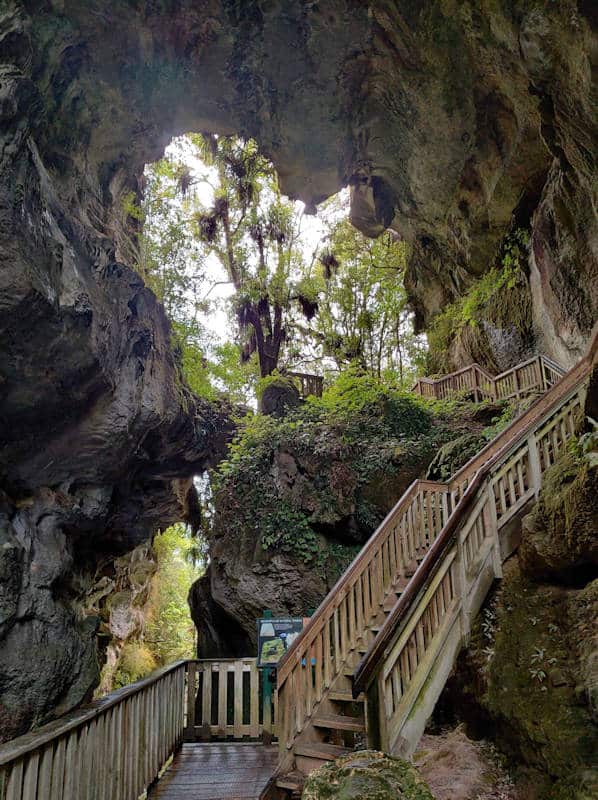
The bridge, formed by two ancient limestone arches created over millions of years, is a 17 m high and spans the Mangapohue Stream, and is all that remains of an ancient cave system.
This is an easy walk which is perfect for all ages. It is a 10 minute stroll from the main road to the viewing platform from which you can also view the stunning stalactites on the upper arch's ceiling.
If you look closely you can also see the 25 million-year-old fossilised oysters exposed in the limestone outcrops.
The walk is a total 20 minute loop track of approx. 700 metres. Pushchair friendly along the boardwalk there are then steps to the top of the bridge the walk then takes you through farmland back to the carpark.
Climbing the steps, which pass under the bridge, you get a superb view of the stalactite-like formations falling from the ceiling.
This walk can be combined with other walks in the area including the Marokopa Falls, Opapaka Pa and Piripiri Cave.
Just 25 km from Waitomo, when you’re passing, make a point of stopping and enjoying this unique spot in Aotearoa.